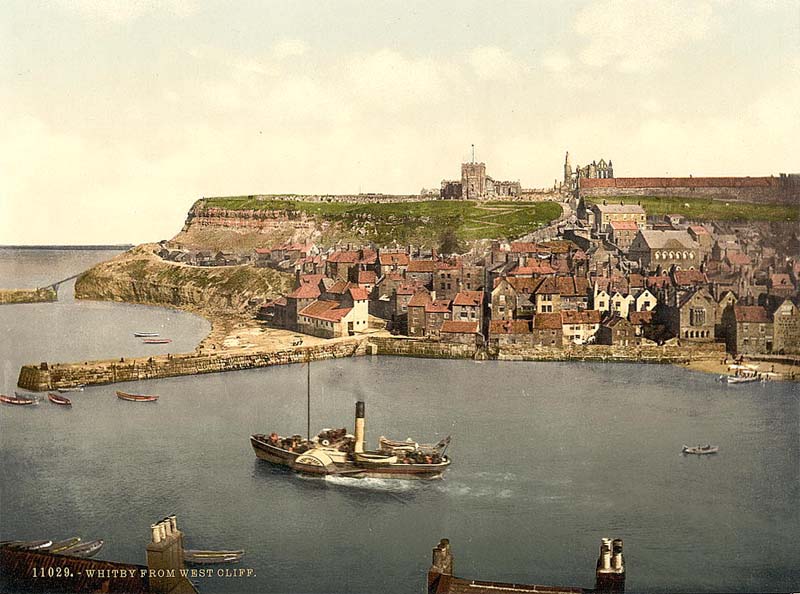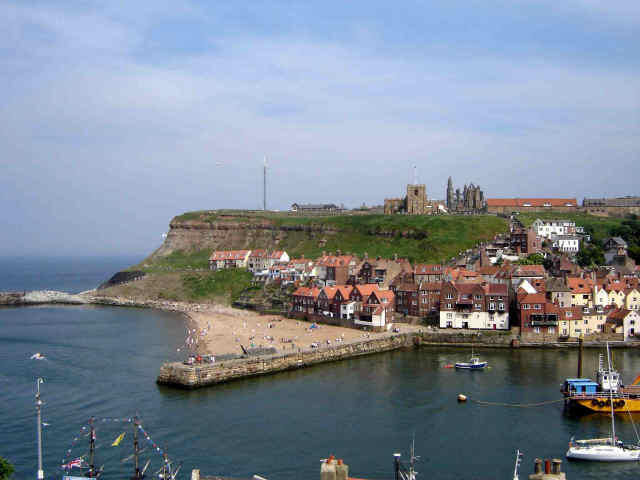22 January 2009
Whitby – the old and the new
Posted by Dave Petley
As someone interested in earth processes, one of the great powers of the internet is the ability to access quickly images of places in which I am interested. Over the last few years my colleagues and I have been studying rockfall processes at the town of Whitby in N. Yorkshire, which is in NE. England. I thought as a bit of fun I would compare two images of the cliffs in the town. The first, assessed from here, was taken in the 1900’s – i.e. a century ago:

The second, accessed from here, was taken in the last few years:
There are several things of interest here. It is important to note that the two images were not taken from quite the same angle -the 2000’s image was taken further from the sea than was the 1900’s one, though there is not much difference. However, there is quite a lot of interest here. First, note the very different beaches between the two images – in the 1900’s image there is very little beach visible, and indeed boats are moored by the small pier. Now the beach has encroached into this area, presumably through natural accretion though I guess it could have been artificially stocked.
More interesting, the profile of the cliff has changed dramatically. The cliff a century ago was far less steep, with a large, protruding toe. In the recent image most of this toe has been eroded away, leaving a far steeper profile. Interestingly though the profile of the top of the slope is little changed, except being a little steeper. Presumably as the toe continues to erode, and thus the slope to steepen, the rate of erosion at the top will increase, or a large failure will occur that will cause the cliff top to erode back a few metres. Fortunately, it is a long way to the abbey and church, and there is little else at the cliff top to worry about unduly.



 Dave Petley is the Vice-Chancellor of the University of Hull in the United Kingdom. His blog provides commentary and analysis of landslide events occurring worldwide, including the landslides themselves, latest research, and conferences and meetings.
Dave Petley is the Vice-Chancellor of the University of Hull in the United Kingdom. His blog provides commentary and analysis of landslide events occurring worldwide, including the landslides themselves, latest research, and conferences and meetings.
There is more beach in the second picture because the tide is out! – even today, at high tide Tate hill Sands (the beach in question) is totally underwater.